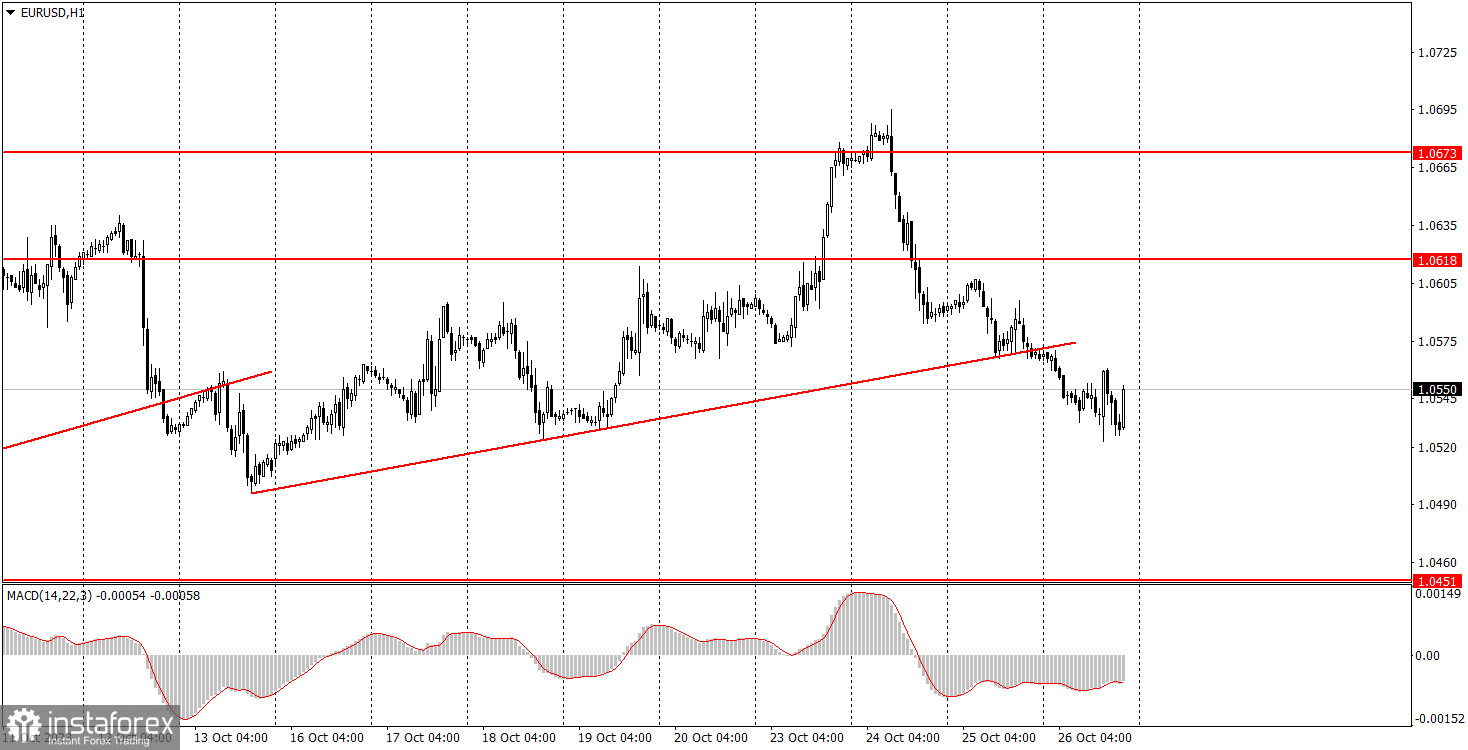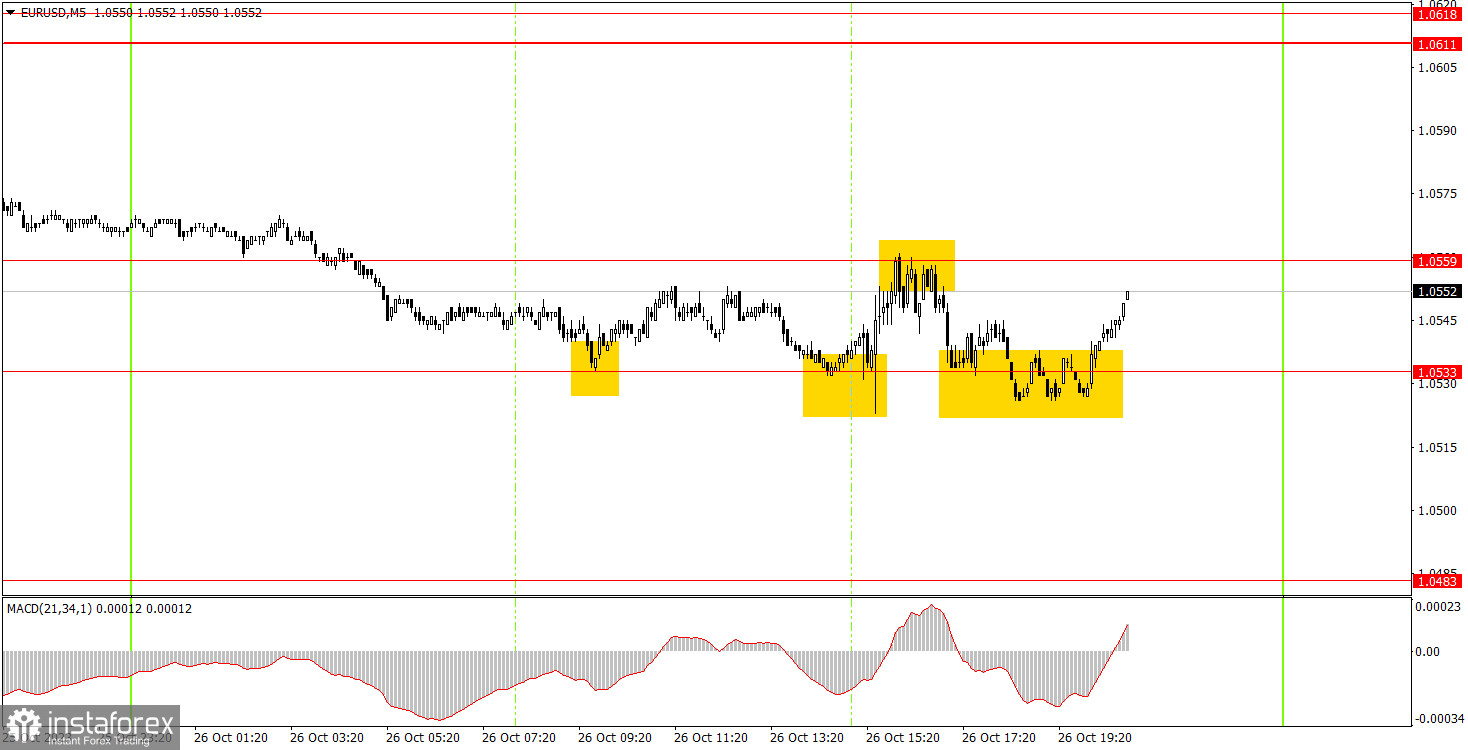Analyzing Thursday's trades:
EUR/USD on 30M chart

On Thursday, EURUSD traded with an overall volatility of 47 pips. And that's all you need to know about the market 's reaction to the European Central Bank meeting, President Christine Lagarde's speech, and the release of quarterly GDP and durable goods orders reports in the US. Four major events that triggered movements of 40 pips. That is significantly less than the pair moves in a typical day, in the absence of economic reports and fundamental events.
To be fair, traders had nothing to react to in regards to the ECB meeting. Rates remained unchanged and Lagarde said absolutely nothing important after the results were announced. However, the US reports were very strong and resonant. Their values could easily provoke the dollar's strength, which didn't happen. Therefore, we believe that the market was simply confused and did not realize what to do with all the flow of information. This will have implications for the pair in the future.
EUR/USD on 5M chart

On the 5-minute chart, you can see exactly how the pair traded during the day. It spent the whole day between the levels of 1.0533 and 1.0559, the distance between which is even less than 30 pips. There were several bounces from these levels. Judge for yourself whether it was worth opening positions before such important events with the prospect of earning just 10-15 pips.
Trading tips on Friday:
On the 30-minute chart, the pair has consolidated below the ascending trend line, which means that the euro can move downwards. The decline should have already happened on Thursday, but it seems that the market was able to push the pair a bit higher before recommencing the decline. The key levels on the 5M chart are 1.0391, 1.0433, 1.0451, 1.0483, 1.0533, 1.0559, 1.0611-1.0618, 1.0673, 1.0733, 1.0767-1.0781, 1.0835. A stop loss can be set at a breakeven point as soon as the price moves 15 pips in the right direction. On Friday, there are no major events lined up in the European Union and only a few minor reports in the US. Ironically, we might see much stronger movements on Friday. In the medium term, regardless of the macroeconomic backdrop, we expect the dollar to rise further.
Basic trading rules:
1) Signal strength is determined by the time taken for its formation (either a bounce or level breach). A shorter formation time indicates a stronger signal.
2) If two or more trades around a certain level are initiated based on false signals, subsequent signals from that level should be disregarded.
3) In a flat market, any currency pair can produce multiple false signals or none at all. In any case, the flat trend is not the best condition for trading.
4) Trading activities are confined between the onset of the European session and mid-way through the U.S. session, post which all open trades should be manually closed.
5) On the 30-minute timeframe, trades based on MACD signals are only advisable amidst substantial volatility and an established trend, confirmed either by a trend line or trend channel.
6) If two levels lie closely together (ranging from 5 to 15 pips apart), they should be considered as a support or resistance zone.
How to read charts:
Support and Resistance price levels can serve as targets when buying or selling. You can place Take Profit levels near them.
Red lines represent channels or trend lines, depicting the current market trend and indicating the preferable trading direction.
The MACD(14,22,3) indicator, encompassing both the histogram and signal line, acts as an auxiliary tool and can also be used as a signal source.
Significant speeches and reports (always noted in the news calendar) can profoundly influence the price dynamics. Hence, trading during their release calls for heightened caution. It may be reasonable to exit the market to prevent abrupt price reversals against the prevailing trend.
Beginning traders should always remember that not every trade will yield profit. Establishing a clear strategy coupled with sound money management is the cornerstone of sustained trading success.





















